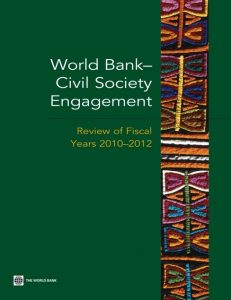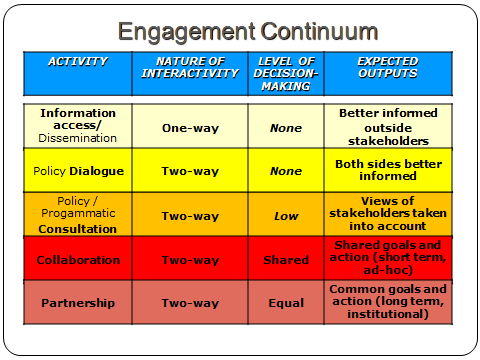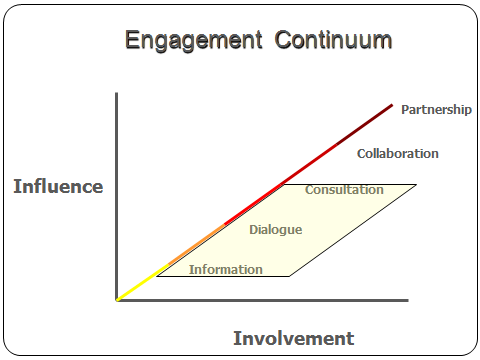
The World Bank just released a new report — World Bank–Civil Society Engagement Review of Fiscal Years 2010–12 — that documents important advances in its relations with civil society over the past three years. It illustrates how these relations have evolved in many areas ranging from policy dialogue and consultation, to operational collaboration. It is the most comprehensive of the Civil Society Review series since its first edition in 2002.
The growing number of CSO representatives who attended the Annual and Spring Meetings most clearly exemplifies these intensifying relations. While less than 100 CSO representatives attended the Annual Meetings a decade ago, by 2012 over 600 participated in the weeklong Civil Society Program. The World Bank also held nearly two dozen consultations at the global level on sector strategies, financing instruments, and research studies over the period, conducting more than 600 public consultation meetings throughout the world and gathering the views of some 13,000 stakeholders. The World Bank also continued to actively engage specific constituencies, such as trade unions, foundations, and youth.
The Review also highlights important examples of operational collaboration in the areas of health, education, disaster recovery, and environmental protection. At the country level, innovative joint initiatives were undertaken—such as establishing a regional network on social accountability in Jordan, monitoring World Bank projects in Nigeria, and earthquake recovery efforts in Haiti. The report shows that there was civil society involvement in 82 percent of all 1,018 new projects funded from 2010 to 2012.
It is perhaps in the area of governance, however, that the most significant steps were taken to strengthen World Bank-CSO institutional relations. While CSOs have played an advisory role in a number of funding mechanisms over the years, they now serve as decision makers in funding mechanisms focusing on food security and social accountability.
These advances were experienced across the spectrum of the civil society “engagement continuum,” which includes information disclosure, policy dialogue, strategy consultations, operational collaboration, and institutional partnerships. As the table below shows, with each level of engagement, the nature of the interactivity, level of decision-making, and expected outputs increase. The graph demonstrates further that as civil society involvement increases so does its influence, and that most of the advance to date has occurred at the first three levels of the engagement continuum.


Over the next few weeks I will be highlighting via this blog the policy, activity, and program advances achieved on several of these levels over the past three years.
For a copy of the Full Report and copies of the Executive Summary in six languages (Arabic, Chinese, English, French, Russian, Spanish) please visit the civil society engagement website.
